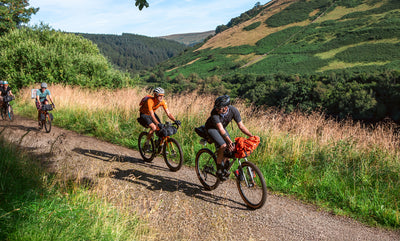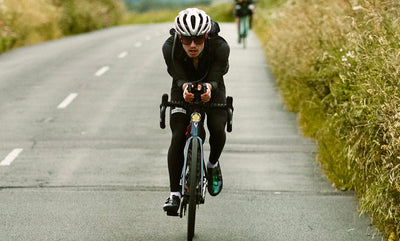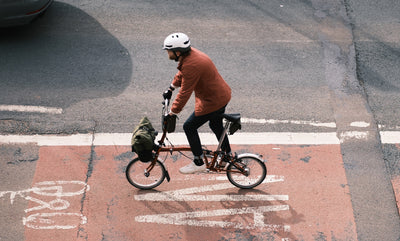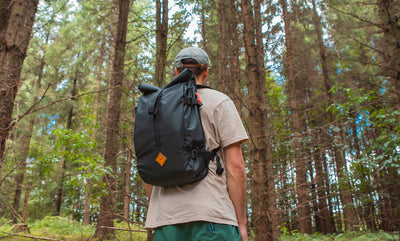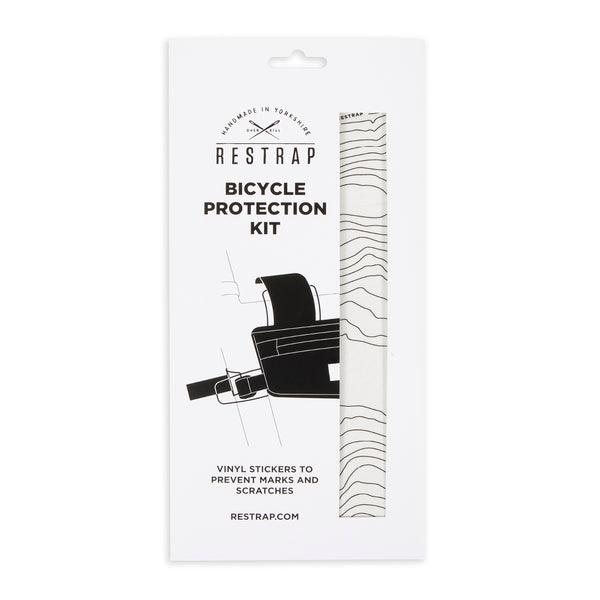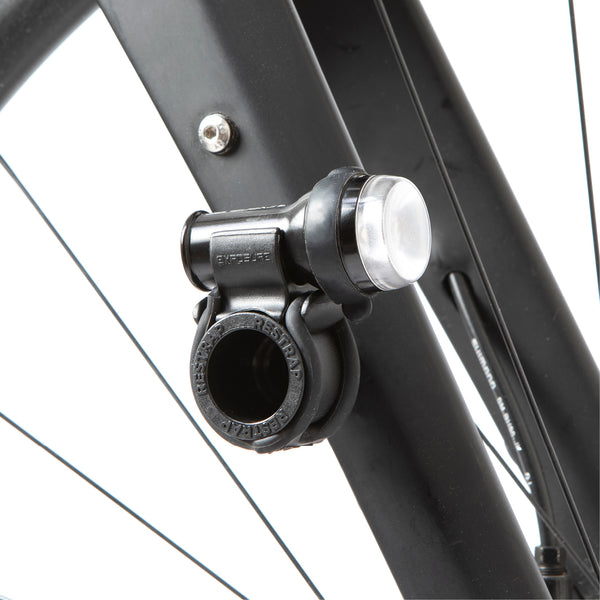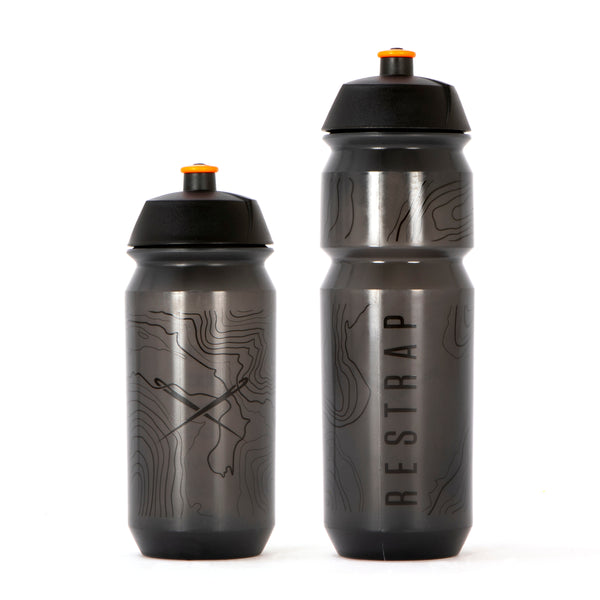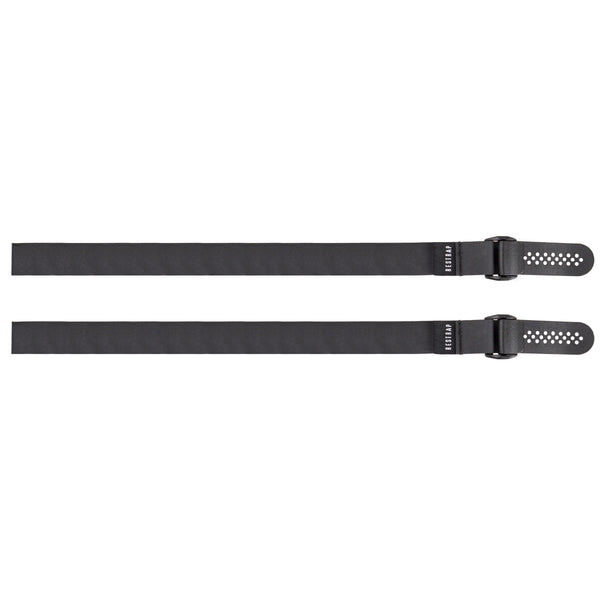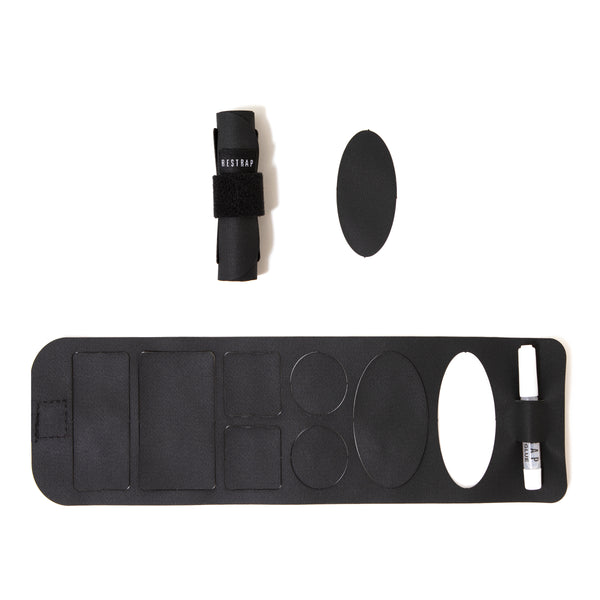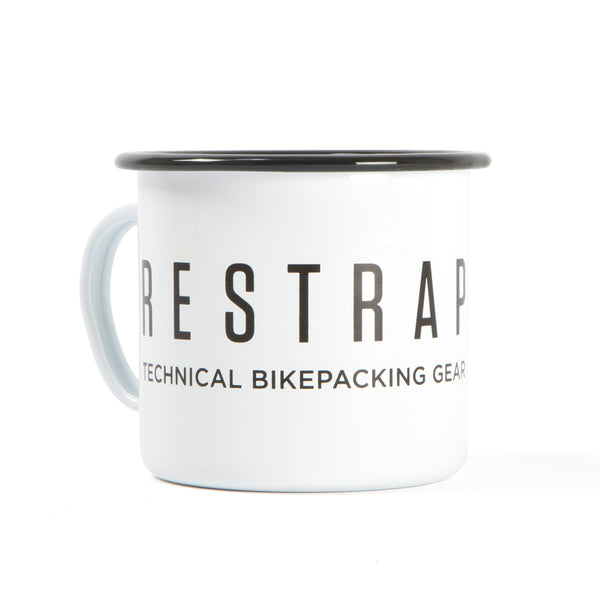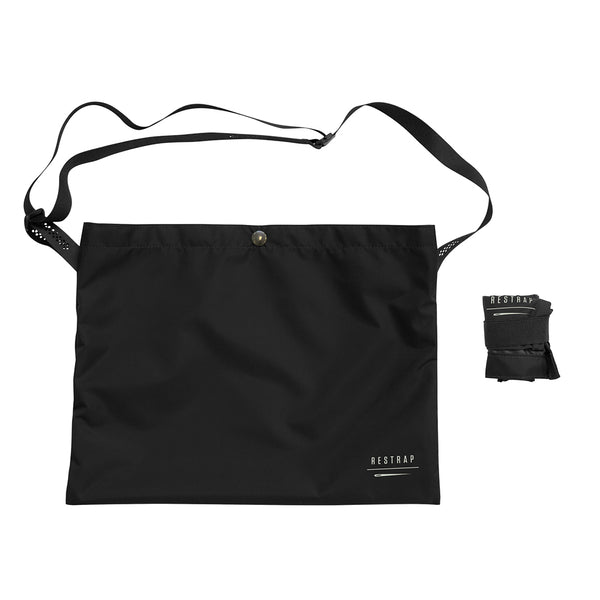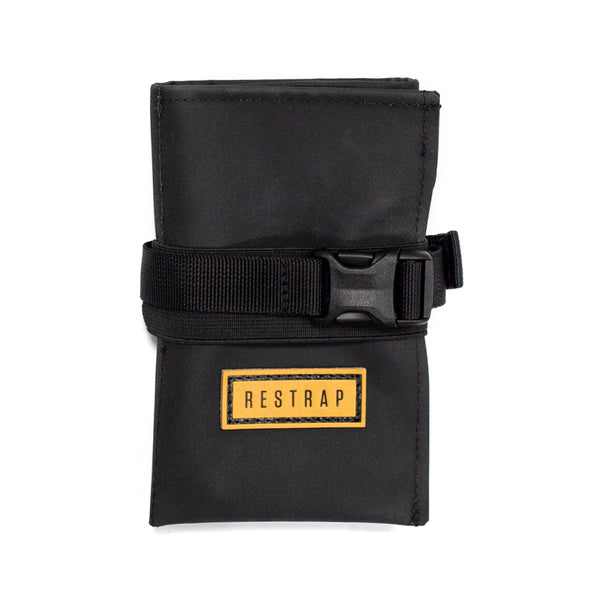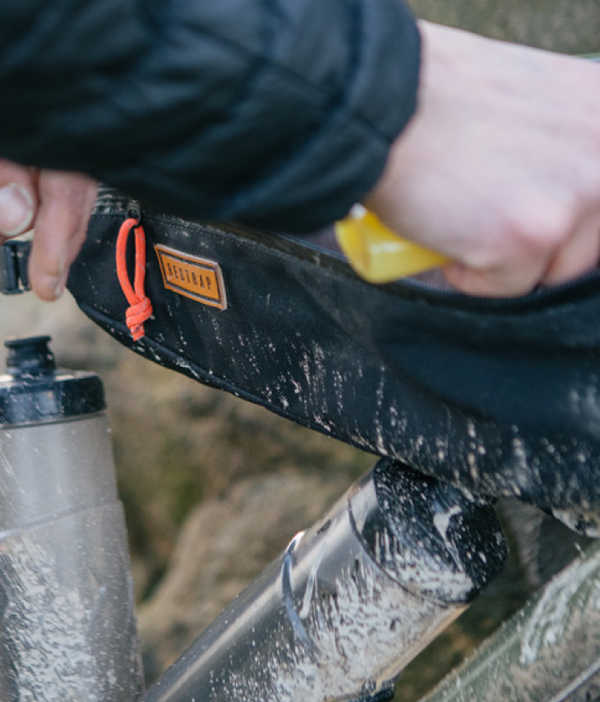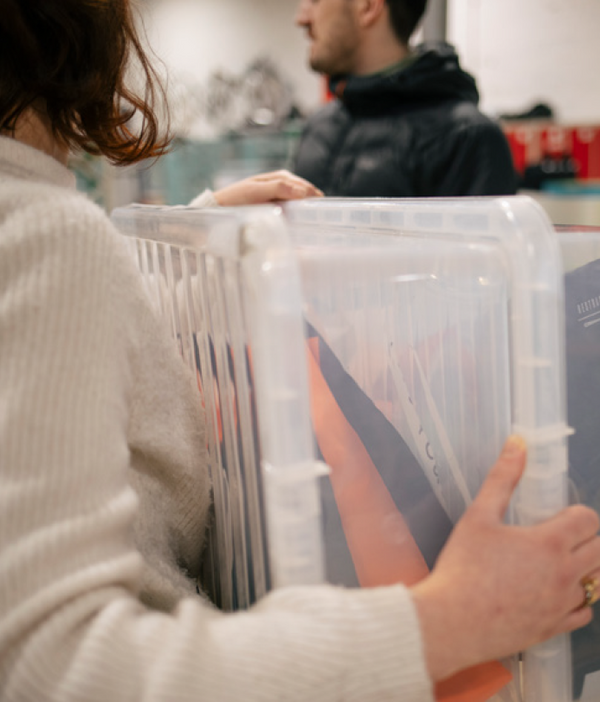Your cart is empty!
Our Top Five Bikepacking Tips

We’ve been making our bikepacking guides for a couple of years now, covering everything from what to pack to where to make camp. Each guide is packed full of tips to make your lives easier. Each is a lesson learned the hard way; by our team heading out there, making mistakes, learning and making completely new mistakes the next time. Through this process, we’ve built up decades of bikepacking experience between us.
So based on that, what are our top tips? The ones that we’d share first, the things that we now do without thinking because they are so fundamental… but you aren’t always told? Well, here they are. Our “Now That’s What I Call Bikepacking: Volume 1” top five tips. Read on to become a bikepacking pro for yourself.
Top Tip #1: Pack light
We’ve done an entire video on stripped down, lightweight bikepacking. But a minimalist approach isn’t just for racers and sado-masochists. Think of weighing scale – no pun intended – where on one side you have fun and comfort on the bike, and on the other sits fun and comfort off the bike. Let’s take things to the extreme for a moment and imagine the ultimate in off-bike luxury. If you bring a full-size pillow, the complete works of Shakespeare, a steak and bottle of wine as well as a complete change of clothes for each day that you are away you may well have a joyful experience in camp… if you ever actually reach camp. The balance tips the other way. Riding a bike with all that kit strapped to it will be a brutally harrowing experience.
Riding a heavily laden bike just isn’t that fun. The more weight you strap to the bike, the less stable it feels and the more effort it takes to simply pedal it. So, leaving behind the non-essentials and seeking out lighter (and more compact) versions of items like stoves, sleeping bags and food options creates a significantly nicer experience on the bike.

Of course, it is possible to take things too far the other way. Some comfort at night is essential, especially on longer trips where you need to rest and recover each evening. Have a think about likely conditions and plan accordingly, but in general if you aren’t sure whether you’ll need something: leave it at home.
Top Tip #2: Maintain your bike
Even on the shortest of bikepacking trips, you are likely to end up covering at least double the miles you might ride on a typical day trip. That’s at least double the opportunity for something to go wrong with your bike; especially when you think about the strain all that extra load can have on components.
While you can never completely insure against freak mechanicals there’s luckily lots that you can do to minimise the risk of anything going majorly wrong on the trail or road. Before you even strap a bag to the bike, give it a pre-emptive once over (and do this in plenty of time to order and fit replacement parts… the night before you set off is not the time to discover your cranks have seized solid or your brake pads have worn down to the backing plate).

We've already covered maintenance essentials in a previous blogpost, but at the very least, check the basics: do you have plenty of life left in your brake pads (and are the brakes working well), are your gears shifting crisp and accurate, are there any mystery rattles or loose bolts? Finally, lube your chain and apply some frame protection to any areas that your luggage will come into contact with.

No matter how well you prepare, if you ride long enough something will go wrong. Make sure you have a multitool that at the very least has all the allen bits needed for your bike and a chain breaker. Pack a tyre lever or two, and the means to repair punctures (whether that is spare tubes, a tubeless repair kit, old school puncture repair kit, tyre boot or – most likely – a combination of all of the above). Don’t forget a pump. It’s wise to supplement this with a few extras: a spare chain link (make sure you get the correct one for your chain), spare brake pads (again, make sure they fit your brakes), a few spare bolts can be handy. Maybe a spare pedal cleat or spokes. All the while, remember Top Tip number 1. If you really, really want to bring a spare tyre, go for it. There will be one day that you can feel very smug. There will be many, many, many more that you are lugging around a tonne of extra weight.

Oh… and a final bonus tip. You know that annoying rattle or squeak that developed during your trip? Fix it when you get home. Don’t put the bike away and hope it will magically self-heal in time for the next ride.
Top Tip #3: Know your kit
So, we’ve covered looking after your bike. The same applies to your kit. You know that all singing, all dancing waterproof jacket that has sat in the bottom of your pack for the last five years? It’s best to treat it to a wash and reproof before discovering it leaks as you shiver on the side of a mountain in a storm.

Equally, that brand new tent you’ve bought? The one that packs away super small and weighs nothing? Trust us when we say you do not want to learn how to erect it in the dark at the end of a double-century day, just as the heavens open. It will not end well. Practice in your back garden or local park until you can put the tent up and take it down without even thinking about it.
We covered different camping setups in our Bikepacking Guide a short while back, so if you're looking at what your options you might want to test out, check out the video below:
Much of the rest of this tip is about leveraging your experience. What are your comfiest bib shorts? Maybe pick those. Do you sleep hot or are you likely to need an extra layer to boost your sleeping bag if it happens to be a chilly night?
And keep learning. Remember what worked – and just as importantly, what didn’t work – and make a note for next time. Keep a mental tick list (or a physical one if that’s your bag) of your preferred kit and before you know it, you’ll become the bikepacking sensei that all your friends rely upon for your insight and knowledge.
Top Tip #4: Plan your route
Once again, there are so many tips related to planning your trip, we’ve done the hard yards and created a whole video to take you through the process. But, spoiler alert: the basics aren’t hard and will make your trip way more fun.
First up, if you aren’t the planning sort, then don’t stress it. Some of our best trips have been when we’ve had a vague idea of a destination and followed our noses. The downside to this approach is it leaves a hell of a lot in the lap of the gods.
With a little planning, you can estimate mileage, research towns and villages for resupply and eye up potential camp spots (or book a handy B&B next to the pub, we ain’t gunna judge). There are some useful tools out there to help. Komoot is our go to route planner, and allows you to specify whether you want to plan a gravel, mtb or road route. There are other similar tools out there though and an increasing number of books and websites that have pre-planned routes for you to follow.

There are a few things worth bearing in mind as you go about plotting your dream trip. First of all, even the lightest set up is harder to pedal than an unloaded bike. Bear this in mind when it comes to how many miles you set yourself each day. This point is amplified when riding off-road and/or in mountainous terrain. If you aren’t used to riding back to back days, don’t forget that you will have to deal with cumulative fatigue as tired legs are asked to pedal another day.
So, you might want to spend a little time planning your escape. Note where the nearest train stations are, or if there’s any shortcuts you can take if the fun/hardship ratio starts swinging a little too far towards self-flagellation.
Top Tip number 5: Have fun!
That’s all that needs to be said. Oh, you need more? Have lots of fun. Riding bikes is play. We are willing to bet that a vanishingly small number of people reading this are paid to ride their bikes. For all the rest of us, if we aren’t having fun something is going badly wrong.

Now, what that fun looks like is going to vary from person to person. The Restrap team has plenty of riders who love nothing more than going deep into the type 2, “it’ll be fun after the event and when I’m in the pub having a pint” end of the spectrum. Equally, there’s lots of us who would much rather head out for a cruisy few hours and will be several pints deep before the hardcore have even got around to switching on their headlights.

We aren’t going to tell you how best to have fun, but do make sure that your ride buddies at least roughly see the world in the same way that you do. Agree on your objectives before setting off; whether that is to take a dip at every wild swimming spot along the way or not take a foot off a pedal until the ride is done.
Bonus Top Tip number 6: Don’t be daft
It should go without saying, but we’ll say it anyway. Eke out as much joy on your rides as possible, but don’t do so at the cost of other people’s enjoyment of the outdoors. Be nice, say hi. Be kind. Help others that you meet on your ride and leave no trace. Literally no trace. No burn marks on the soil. Learn how to poop in the wild responsibly. Oh, and take your litter home with you. Better than that, take any other litter that you find home with you. We all do our best to take care of the environment we love to ride in, and encourage you to do the same!
Learn More
We've covered every facet of bikepacking in our Bikepacking Guide series over on YouTube - be sure to click the playlist link below and head over to our channel to subscribe for more videos coming soon!
Words by Tom Hill
Photo Credit:
Vincent Engel (@elevenspeedloservincent), Rupert Hartley (@rupertyhartleyphoto), Jack Davies (@frictioncollective), Tom Hill (@24tom)














